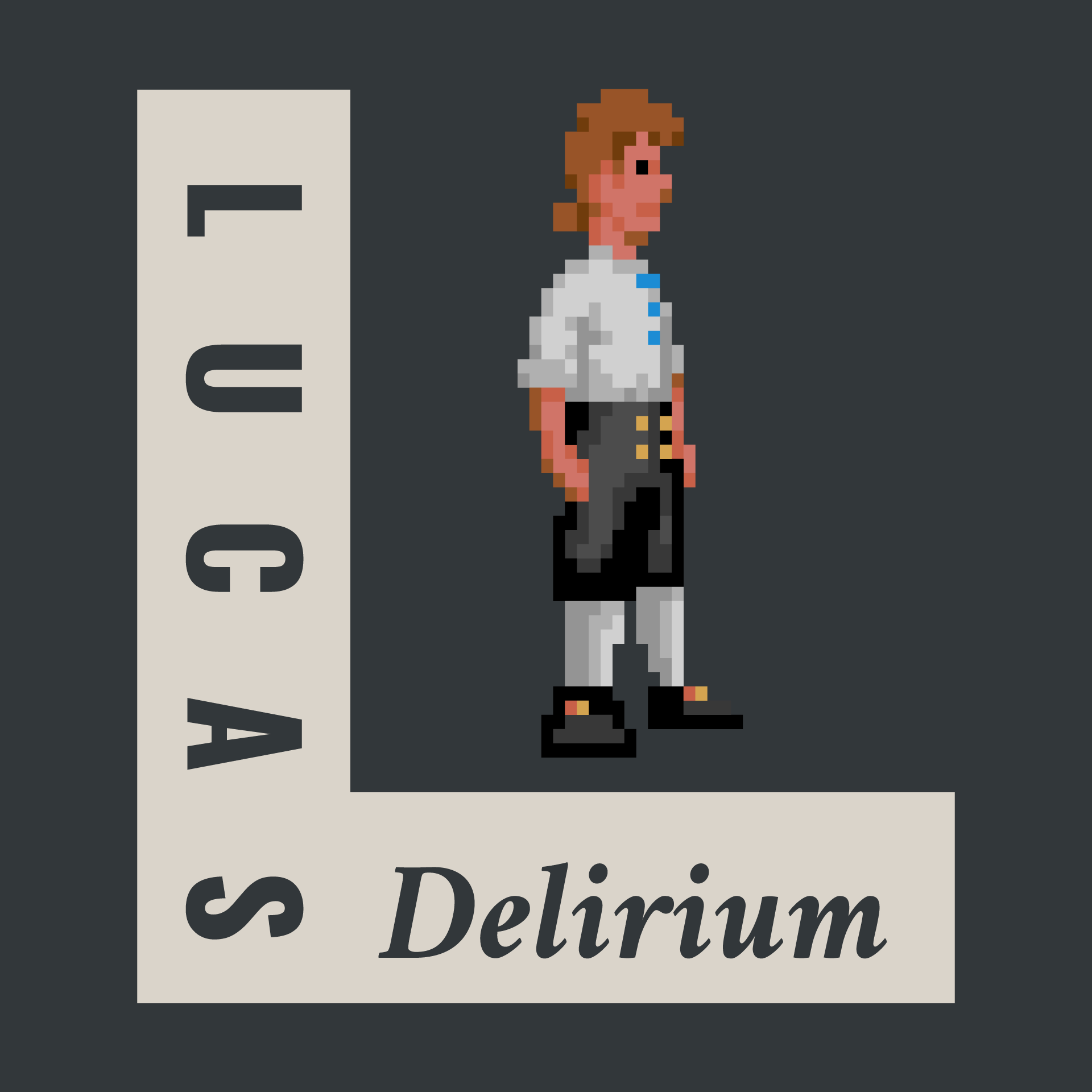An interview with Tami Borowick,
Scummlet extraordinaire,
from Monkey Island 2 to Freddi Fish
A chat with an unsung-finally-sung hero of point & click golden age
(Cliccate qui per la versione in italiano)
by Diduz
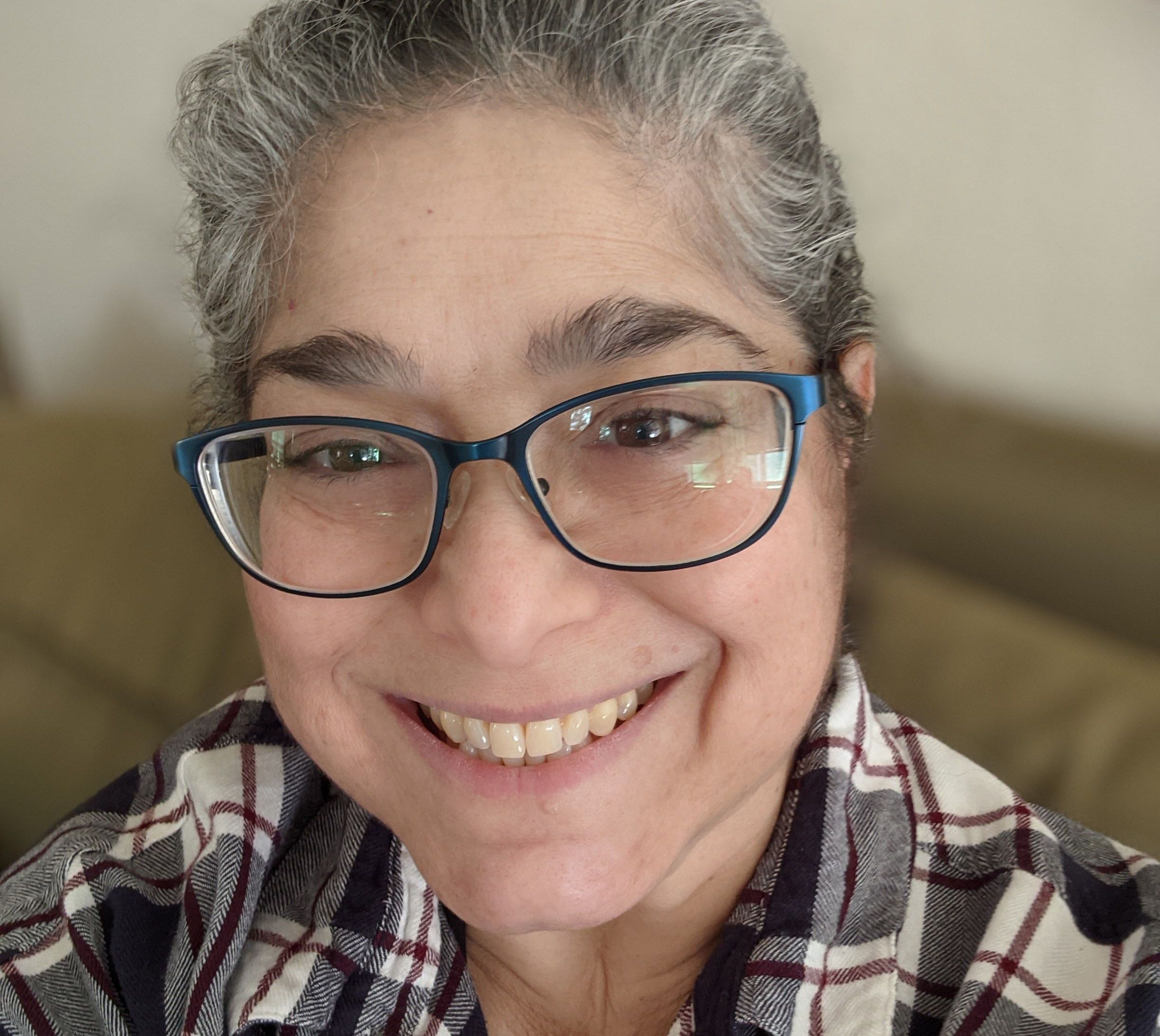
She knows a thing or two about drinking contests with pirates. She managed to dissolve a troll through the magic of dithering. She struggled with one of the most unforgettable and outrageous scenes in Monkey Island 2: LeChuck's Revenge. She helped us Commodore users by leading the epic Monkey 2 Amiga porting. She co-created Freddi Fish at Humongous Entertainment and established herself as a full-fledged author of point & click adventure games, with an eye to a realistic representation of female characters. She's Tami Borowick: a writer, programmer, game designer and overall nice person I had the pleasure to interview about her days at Lucasfilm Games and Humongous Entertainment.
The mandatory overture of our interview is THE question: who is Tami Borowick? When and how did the benevolent fate bring her to the nerdy heaven of Lucasfilm Games? Were you a gamer or just into programming?
Thanks so much for interviewing me! I had the amazing fortune to start my professional career in 1990 as an Assistant Designer/Programmer of SCUMM games at Lucasfilm Games. Most of the products I worked on there were related to the Monkey Island series, though I also did some work on an ill-fated Young Indiana Jones game project led by Joe Pinney.
I wasn't a gamer nor did I think I'd become a professional programmer. My college major was communication and I studied programming as a focus because computers were becoming more prevalent in workplaces and I figured I should know how to use one.
I believe my job offer for Lucasfilm was a fluke. After seeing an ad for an internship, I wrote to Lucasfilm and told them I was looking for full time work "in PR, advertising, or marketing." A week later, they phoned to ask if I'd be interested in programming games! That's a pretty far cry from PR, advertising, or marketing! And as a Unix and Mac person, I didn't know much about PC computer games, except that they existed. Surprisingly, Lucasfilm sent me three games (Zak McKracken, Loom, and Maniac Mansion) so I could get a feel for them. But I had no PC to play them on, and neither did my classmates. I rented time at an off-campus computer center. I was nervous about not knowing how to play and I didn't have enough money to stay longer than an hour, so I had to learn quickly! But as soon as I started the first game, the music attracted the other customers, and within a half hour, everyone in the center was gathered around me, suggesting ways to solve puzzles and having a great time! I loved the comradery the game evoked and the stories they told. Plus the characters were interesting, and Maniac Mansion even had a main character who was a woman! I pretty quickly knew this was the job for me!
Looking back, I consider myself lucky that Lucasfilm was willing to take a chance on me. I truly was in the right place at the right time. But they were also lucky to hire me because I came with my own set of knowledge and skills that were a little different than their other SCUMM programmers. But that's what Lucasfilm was looking for. They wanted to grow the user base beyond the traditional 18-35 male demographic. Here I was, in the right age group, but I was a woman, who graduated from a women's college. Not your traditional gamer mentality!

We know that first time programmers attended the "Scumm University" at Lucasfilm Games. Ron Gilbert basically taught you how to use the engine. Do you remember how those classes worked and your first steps into Scumm magic?
My SCUMMU class was very special. First, Lucasfilm had hired four programmers at once (Mike Stemmle, Tony Hsieh, Sean Clark, and me), which was a lot considering that's the same number of programmers who were currently there. They also hired Brad Taylor as a system programmer and Wallace Poulter as a documentation specialist at the same time. AND … they had brought on Hal Barwood as a project leader. So we were quite a large and diverse group of SCUMM students. Second, we were the first class that was given Steve Purcell's "Sam and Max" artwork to use in programming pre-designed puzzles. Previous classes had to make up their own puzzles and scavenge for artwork from the games in production or draw it themselves, which we did as well. But at least we had something inspirational to look at when we started. Third: The actual Sam and Max Hit the Road game spawned from the artwork and puzzles from my SCUMMU class!
The class itself was held in the attic of the Main House on Skywalker Ranch. George Lucas worked somewhere below us, and he actually held a door open for me once! But that's not where the Games group worked. So we started in the Games Group area of the Stable House, while waiting for all the new hires to arrive. Once everyone was there, we had to move everything to the Main House. There was no IT department or Facilities group to do it for us. So we students carried our CRT and monochrome monitors, desktop computers, and (thankfully) rolling chairs across the campus from the Stable House to the Attic of the Main House. And yes, that included stairs!
Once situated, each day started with a lecture about the language and the commands from Ron Gilbert). Then he'd go away to work on Monkey Island 1. But throughout the day, Ron, various guest speakers, and the other scummlettes would check in on us. There weren't a lot of right and wrong ways to do things, but there were things that had been found to work better. So we learned a lot of that there. The one thing I remember most from those lessons was Ron describing how SCUMM was a multi-tasking language. The takeaways I still remember: once we started a script, it joined the others that were already running; looping scripts needed to give other scripts a chance to run by adding a "break"; and nothing updated on the screen until all scripts got to a breaking point. These lessons would come in handy later, when I did some work for the Amiga.
Among the things you did before Monkey 2 at Lucasfilm Games, I read you co-authored The Secret of Monkey Island Demo, which is pretty different from the game itself (and hilarious in its own right!). Why did you, Mike Stemmle and Tony Hsieh approach the demo like that?
The demo you linked is actually two parts, the first part was programmed later by the actual Monkey Island 1 team. It was a spoof of a bank's TV commercial, which was overly dramatic and sentimental. The interactive part of the demo was done by Mike Stemmle and me for the Sampler (Passport to Adventure), while the game itself was still in development, so we didn't have all the finished assets, but we tried to use as much of the real code as possible. It was a great master class – digging our hands into real code and artwork for objects, z-planes, parallaxing objects, actors, dialog trees, system variables, and more. Ron had his hands full finishing the real game, so he gave us free domain to figure out demo puzzles and ways to block off areas where we didn't want the player to go. Though he did give himself veto power, if we got too crazy. Which brings us to the bridge troll, which we placed on the boardwalk. We had the troll's real art from the game, but he didn't look menacing enough that Guybrush would not just walk around him. So I took the animation of the troll's arms and using simple flip-x/flip-y commands, I made them spin. Then I did some dithering with the background color to make his disappearing animation because I thought it made him look magical. In case you couldn't tell, I'm not really an artist. Besides coding and animation, we wrote some demo-specific dialog. I don't remember who wrote what, but the Prisoner's line "Tim once told me that Dave said that Ron wanted to know why 'a third Shadow is nigh'" sounds a lot like my sense of humor … or I was trying to kiss up to Tim Schafer, Dave Grossman, and Ron Gilbert!
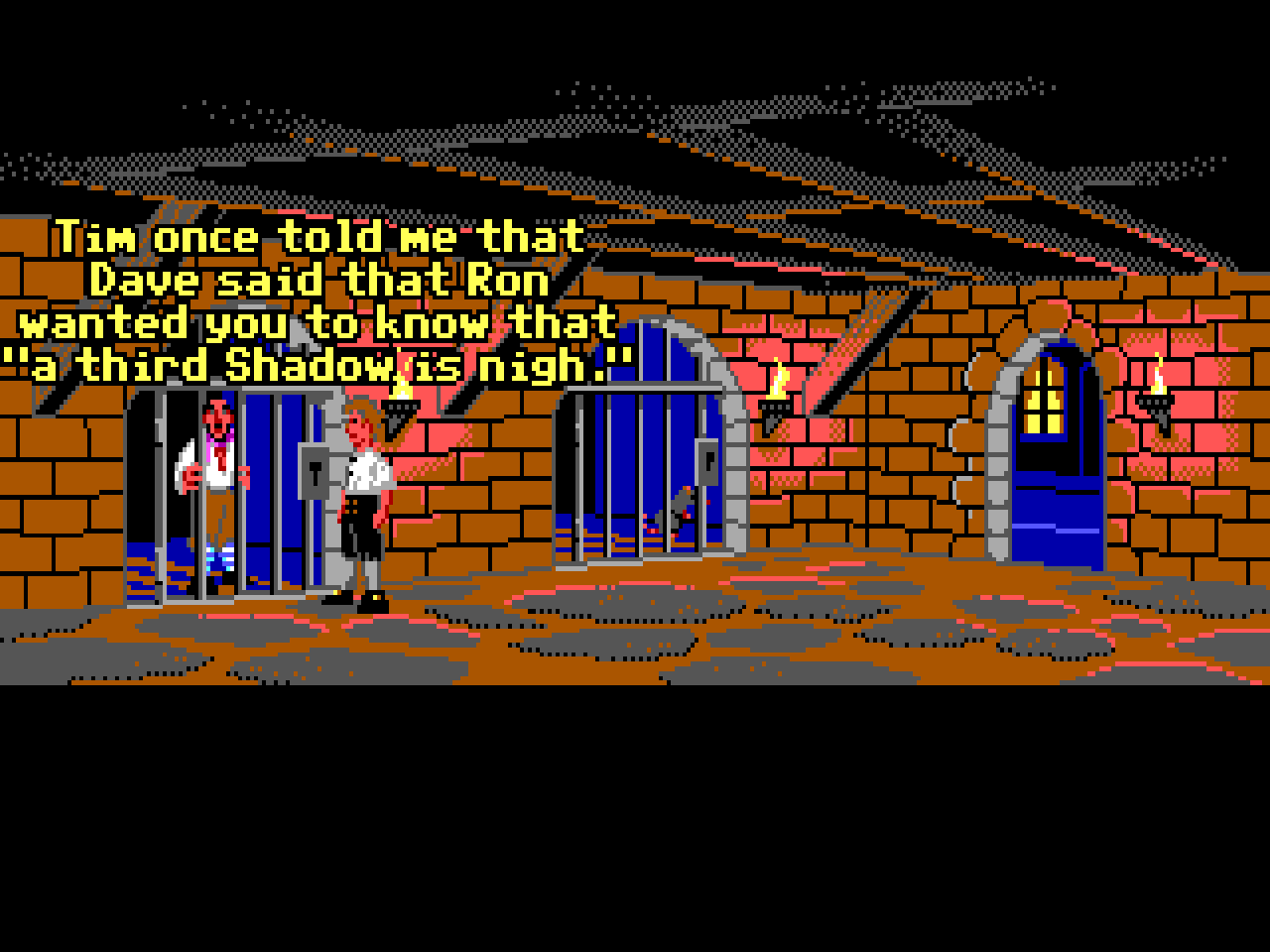
I read your name in the artwork credits for the VGA version of Monkey 1 and the Amiga version of Fate of Atlantis. I understand you also tried your hand at Deluxe Paint? Do you have an artist background?
Nope, no artistic background. I took a costuming class in college, which was all about drawing the human form and putting clothing on top of it. The first assignment was to draw a woman wearing a Victorian dress. So I went to the library and found that women at the time wore big-ruffled tops leading to small waists (often with ribs removed) and flowing ruffled gowns. My Victorian gown made the top of the woman look like an inverted triangle! But when Monkey 1 moved to VGA, all the art needed to be updated, so it was all hands on deck and we all did what we could. I was assigned the dancing monkeys in the opening of the game. They were, dark grey with white bellies. I basically gave them a black outline and successively lighter grey lines inside until I got to the white bellies. As I said above, I'm not really an artist. ;) ... Well, I see now that the dancing monkeys were in Monkey Island 2, not Monkey 1. Hm. Am I remembering incorrectly? Did the monkeys get moved from the first game to the second? Did Ron just give me something to do to keep me busy and out of his hair for a while? We may never know. But I do know that those are the dancing monkeys I re-colored!
How did you end up in Monkey Island 2: LeChuck's Revenge team? Did you particularly like the first game? Did Ron choose you to work on the game or did you "apply for the job"?
To explain that, I first have to explain how we got our assignments for the Sampler. My scummlette classmates and I literally drew toothpicks! I drew the short one, which was assigned to framework and system coding, while the other three toothpicks were assigned to the three game demos that my system code would connect. I was not much of a system coder and much preferred creative work, so I was glad the system didn't take long to construct. Once it was done, I moved over to help with whichever demo needed me the most, which happened to be Monkey Island!

By the time Ron and Hal picked their new programmers for Fate of Atlantis or Monkey Island 2, they had gotten to know us a bit from SCUMMU and from our interactions while working on the Sampler demos. Ron already had Dave & Tim, since they worked on the first game, so he didn't need as many people as Hal needed for Indy. Mostly, I think he and Hal went with whomever had worked on the demo for their brand. But we weren't in the room when they chose, so I don't know if it was a power grab or a concession that I got put on Monkey Island 2. I'd like to think that short toothpick literally changed the course of my life!
Monkey Island 2: LeChuck's Revenge is a milestone in adventure gaming. Since you're credited as a writer and programmer on the project, I must warn you that this answer is your chance to connect with thousand of adventuring nerds. :-) Can you recall specific scenes / characters / rooms / dialogues you worked on?
I programmed probably close to a third of the rooms, but the two that I remember most are Rum Rogers' cottage and the cemetery.
Rum Rogers was a chatty fellow and I wrote all sorts of great, witty, fun, interesting dialog for him while he went to retrieve more grog for the drinking contest with Guybrush. Unfortunately, just after Ron Gilbert approved what I had done, he noticed that my computer was running slowly. He suggested I defragment my hard drive and he started Defrag for me. The program was nice in that it showed a little map of the hard drive, where files were situated on it, and you could watch the files fly from their old location to their new location. It was pretty spiffy for the time. But it was clear to see that I had never run it before and my hard drive was a mess of fragmented files; it was going to take a long time to finish. So Ron told me I could run it later and pressed the Esc key to stop Defrag. As he pulled his hand away from the keyboard, a small red window appeared. "Fat File Corrupt" and it had a single button: "OK". NO! It was not okay! I did not want to click that button. I wanted my files to not be corrupted. Especially since we didn't have anything like a cloud or even a network to backup our files. We merged files by hand once a week and this was the end of a busy week. Well, Ron figured out that we could retrieve individual files by assigning the proper first letter to their filenames. It was slow and an arduous guessing game, and I was thankful that Ron helped do all that work. He had caused the issue after all! Dave Grossman quipped that I had been working too fast, so Ron had to find a way to slow me down. Well, we ended up getting most everything back … except Rum Rogers! After all that work, his massive dialog tree was gone and I had to write it all over again. Though it's true it was easier to write the second time, it didn't get the same amount of love. Sorry.

The cemetery, where Guybrush dug up a bone, raised it over his head, and dropped his pants, created a controversial scene. Somebody suggested his pants should fall down and the team thought it was hilarious. But I felt like it was unnecessary and offensive. Afterall, I don't want to see pixelated guy parts when I'm playing a game! So Ron assigned this scene to me! At the time, I thought he was being mean or punishing me for not going along with team think. In retrospect, it was wise to give me that scene because I worked with the artist and made sure it was funny instead of offensive. And it actually became a scene I'm super proud of, though largely because of the lightning, which I programmed by accident, using a flaw I found in the SCUMM system. But that's a different story!

All in all, was Monkey Island 2 a tough project to work on, what with the iMUSE and its magnitude? And yet the team created the game in one year! Which is pretty unbelievable these days...
It was a tough project and it was my first, so I had nothing to compare it to. We started working nights a few months into development. At six months, we added weekends. We didn't go home until sometime around midnight every night. We were together all the time. We ate lunch together, brought in restaurant food for dinners, and on the rare night off, we'd go to a movie theater together. I thought this was how all game development teams worked. What did I know??? My mom once asked why I didn't go into the office earlier, so I could leave earlier. I told her it would just mean I'd work a longer day.
"Magnitude" is a good word for iMUSE. It was big and powerful! Though he also did regular room programming, Bret Barrett was our go-to guy for implementing iMUSE into most of our rooms. He spent an enormous amount of time tweaking cues and consulting with Michael Land and Peter McConnell, but all that work helped set a mood and create an ambiance.

[Image source: LFG 1991 Yearbook]
You may underestimate how important the Amiga version of Monkey Island 2 was for us European gamers! Many fans didn't believe an Amiga version was even possible! I remember how happy we were when we finally saw the game running on our machines (ON 11 FLOPPIES!), so thank you for leading and programming that porting. But what did "programming" mean in this case? Vince Lee and the late Mark Haigh-Hutchinson ported the engine, and the game script is more or less the PC one, so what was your challenge as a programmer (and supervisor) in this case?
I'm so glad people enjoyed the Amiga version! Vince and Mark really did do the lion's share of the work on the Amiga conversion. I did things like remapping colors that hadn't converted well; incorporating localized dialog and ensuring nothing was missing from dialog or artwork; adjusting text that didn't fit on screen, wrapped oddly, or caused timing issues; re-designating which assets would be stored onto which floppy disk; and the such. I also worked closely with Vince because I would come across things that weren't working right or could have worked better from the system side. So I would bug him to make system fixes/changes to accommodate my wants and needs. You're welcome. ;)
Remember how I mentioned that SCUMM was a multi-tasking language? I loved that the Amiga was a multi-tasking environment! While making these ports, I learned to be very efficient by running multiple commands at the same time from the command line. For instance, I could compile all languages of Monkey 2 at the same time, while I left my desk to chat with someone, eat my lunch, or play the Millipede arcade game we had sitting in a hallway! Though at the very end of my Amiga work, my final task was to copy everything off the hard drive then clear it out. Well, I'm sure you know what's coming. I typed "copy *.* to <disk>" followed immediately by "del *.*". I did not wait for the first command to finish. This time it was my fault. And this time, I did have backups. Phew!
We know many things about the happy days at Lucasfilm Games, but we don't know that much about Ron Gilbert's epic endeavour in Humongous Entertainment. You were there at Day 1, if I'm not mistaken. What was it like at Humongous in the beginning and later, when the company hit its stride?
It's true I was part of Humongous' inception, but I didn't officially join until a month after it started. So I was the 4th employee (behind Ron, Shelley Day, and artist Dev Madan) and our core team at the beginning was about 10 people. Humongous was a wild ride. We were small and scrappy. We all wore multiple hats. Besides programming, I built my own computer, proofread everything we printed like sell sheets and box packaging, and started tracking everyone's schedule in the hopes of one day making a more realistic work schedule. But we couldn't have that type of schedule with our first few games. If we didn't get these games out on time, there wouldn't be money for paychecks. So, we immediately worked in crunch mode and released our first games in record time. If I remember correctly, 1.5 months for the first Junior Adventure, 2 months for the second, and 2.5 months for the third. And in-between we were also releasing minigames repacked by themselves! It was exhausting, but we were dedicated – as a company and as individuals. Everyone had an eye for quality and wanted to make the best possible games for kids.
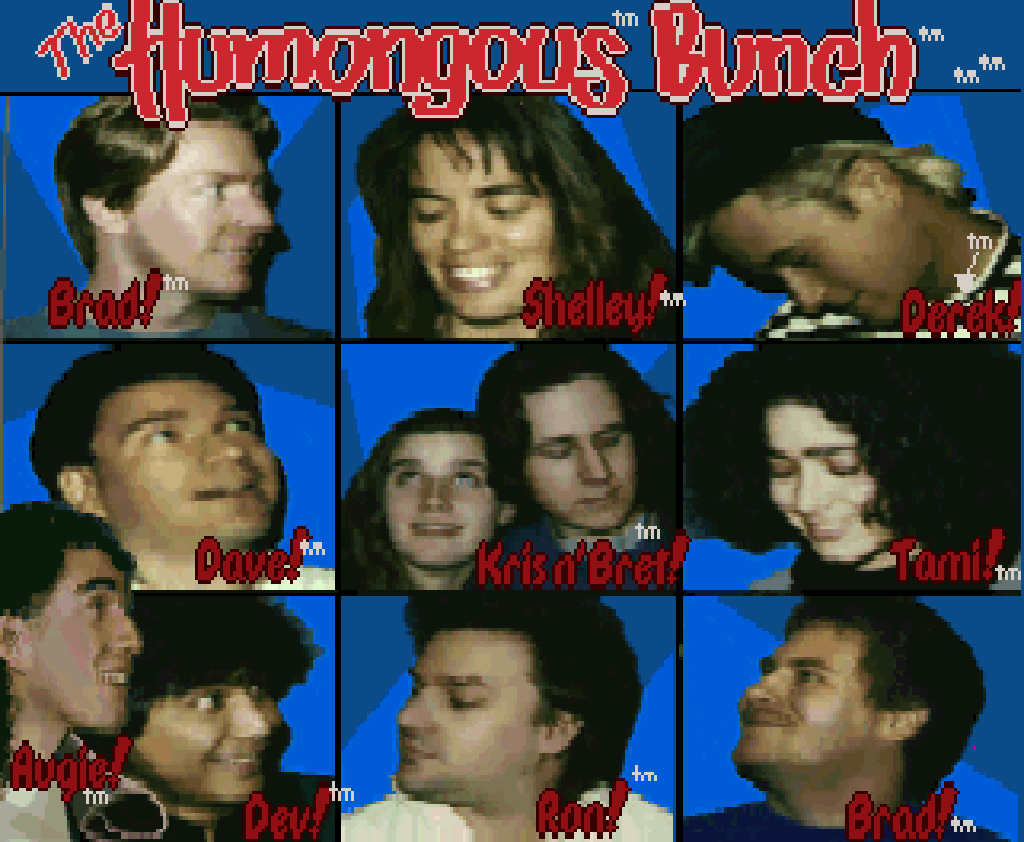
Ultimately, the company grew to about 400 employees, with people working on Humongous character games, Backyard sports, console games, and Cavedog games for more strategic players. We went from being close personal friends with everyone in the company to wondering if a person in the hallway was an employee or a crazed fan. To combat this, our president started picking out ten random people at our company meetings and giving a prize to the first person to call them all by name! I was determined to win! "Um, what's your name?"
Humongous Entertainment marked a very important step in your career: you became a project leader and creator for the Freddi Fish series (btw, Freddi Fish 3: The Case of the Stolen Conch Shell is my favorite, because of its whodunnit plot!). How was the character and her world born? Were you the project leader right from the beginning?
I have warm feelings for Freddi 3, too. The tropical locale reminds me of the Hawaiian vacation I took just before we started development and some of my pictures were used as inspiration. Aloha!
Freddi was actually born as a fish named Fred, from a comic drawn by Brad Carlton (who later became one of our game designers). In the comic, Fred and his fishy friend Ed talked about their buddy Ted, whom they realized was now dead, so they could eat his eyeballs! Yeah, maybe a little gruesome, though not for fish! But it was interesting art style, and when Ron saw Fred drawn by himself on Brad's resume, Ron became enamored. So he, Brad, and a writer worked on an adventure game script. After they had the initial storyline and script, I was brought on.
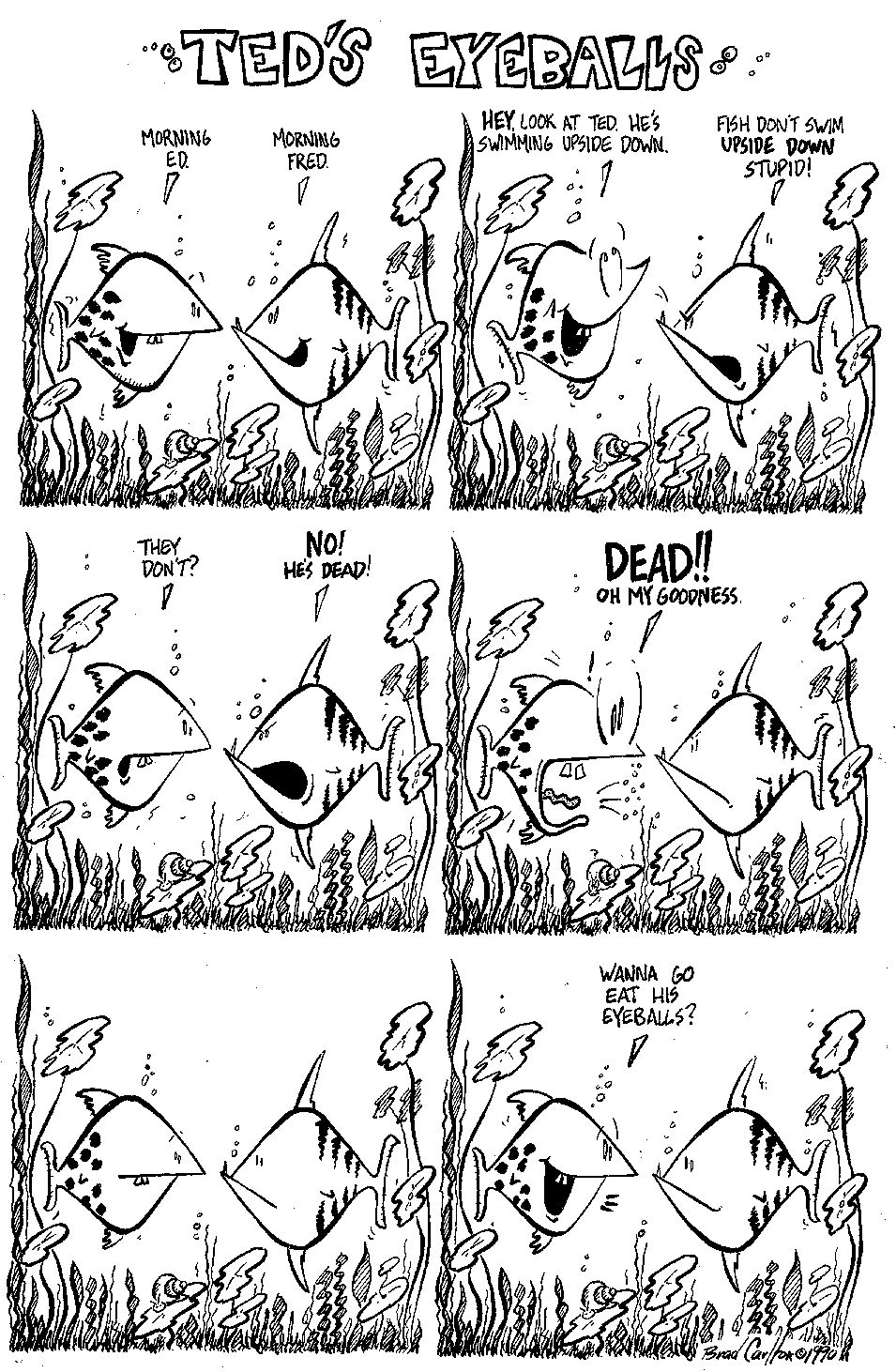
My first official act was to make a more realistic development schedule. We didn't have enough money to have no crunch mode, but we did have enough to hire more people and take more time! I took every bit of time I could get onto the schedule!
My second official act was to change Fred's gender. Years before Lara Croft, the industry believed boys would not play female characters, but I knew we could design a girl who would appeal to everyone. Humongous had a purple car and an animated teddy bear named Fatty, but no female lead characters, so it just made sense for our next series to follow a girl. I sent the script back to the writer and asked him to make the change. When it came back, Freddi wore lipstick, carried a clamshell purse, and was suddenly afraid to make a tall jump, which she did without hesitation as a male character. So, I sent the script back again with more explicit instructions to only change pronouns and her name.
Throughout her design, I pushed hard to keep Freddi fairly androgenous. I didn't want it glaring from her visually or through a diminished personality. Though I never wanted to hide her gender. Real little girls are strong and smart and have actual personalities and can even dress up without being girly girls. It's only hair, clothes, makeup that allow people to discern their gender at that age. But they shouldn't have to be sexualized with a pony tail, pink and purples, or skimpy clothes, just for players to recognize that the character is not a boy. We used a voice actor with a very feminine voice, but instructed her to sound strong and adventurous. She was still a woman voicing a little girl's character. Later, I realized that audiences are used to hearing women play the parts of little boys. Think Bart Simpson or Peter Pan, who even in theater shows, was always played by a woman. I find it interesting that in the absence of sexualized clues, people just assume a character is a boy. To fix this misunderstanding, in Freddi's second game, I added her line, "Excuse me sir, but I'm not a boy! I'm a girl!" I always imagined her fins on her hips and stomping her tailfin! Darn schedule; we used an existing animation.
Long past my third or fourth or hundredth official act, about halfway through production of the first Freddi game, I agreed with Ron and Brad Taylor's suggestion to move from DOS to the yet unreleased Windows 95. It was a huge change. All the art needed to get re-drawn and the programming adjusted as we went from 320x240 to 640x480 high res pixels. Our system needed to be ported, though Win95 was still in development. Plus, all our tools had to be re-written to accommodate these changes. Oh, and we decided if we're going to make all those changes, we might as well also change from backgrounds and animations drawn on the computer to fuller, richer, more engrossing backgrounds painted in gouache and hand-drawn animations that had to get scanned in then ink-and-painted. So, basically everything about our processes and the game needed to be reworked from scratch. Did I mention we had to release the game on the same date we had originally scheduled?! Hahaha! The schedule laughed demonically at my attempt to not have crunch mode!
Humongous games were bona fide point and click experiences, albeit simplified for the younger audience. What was your m.o. in coming up with story and design for each game? Maybe some rookie adventure game designer could use your tips...
Everybody designs differently and different products deserve different methods. For Freddi, I liked to start by figuring out what the mystery is – who are we helping and what is the problem. Then I like deciding on a locale – a dried-out undersea landscape, a small town with a schoolhouse, a tropical vacation. These can help guide who Freddi and Luther might meet during their adventure and how they might be able to help. Be sure to include characters of all genders and multiple ages, and beware of stereotyping.
In designing puzzles, I like to have a spectrum of difficulty levels, so there are some easy wins and some that need to be earned after hard work. I also recognize that different people think differently. So I try to give puzzles that use different parts of the brain or different skills. Maybe one puzzle requires artistic skills, another takes quick reflexes in an arcade game, and another requires math. Each Freddi Fish game also included one lever-and-pulley puzzle, showcasing the concept in different ways in each game.
And I try to avoid figurative "cow in the road" puzzles, where something is blocking a character's progress, but there's no reason for the object to be there, and often the solution to the puzzle makes no sense either. It doesn't have to be an actual cow or an actual road. Frankly, it could be a piano playing "monkey wrench", like in Monkey Island 2. These puzzles are also called "COW puzzles – Convenience Of Writer". That said, Putt-Putt Joins the Parade had a literal cow in the road, blocking the path. But it made sense because Putt-Putt's world is pastoral, so a cow wandering over is logical. And the solution was to honk the horn, learning that Putt-Putt's interface was the same as an actual car! So it was a natural-feeling puzzle, one where you slap your head and say "Of course!" after you solve it, instead of a puzzle that feels forced, like hypnotizing a monkey.
What have you been up to after the end of glory days at Humongous in the first 2000s? You don't work in videogames any longer, is there a reason you preferred another career? Do you still play videogames (and adventure games!) now and then?
After Humongous, I designed electronic toys that helped kids learn at Fisher-Price. My favorite design there was Kasey the Kinderbot, a baby-sized robot with LCD screen, LED buttons, and robotics for his neck, arms, waist, and eyes. I didn't design the way he looks, though he's super cute. I worked on his interactive content – what he said, showed, lit up, and when he moved. Kasey helped me prove that children would play with toys for much longer than 15 minutes if they were engaged and delighted. (The 15 minute mark was the standard for success in the toys industry at the time.) Since then I worked on an online math product and casual games before I moved to social media analytics – helping companies understand what people think about their products. Interestingly, I find all these jobs similar, as they're all about building a story to raise engagement and help explain a concept.
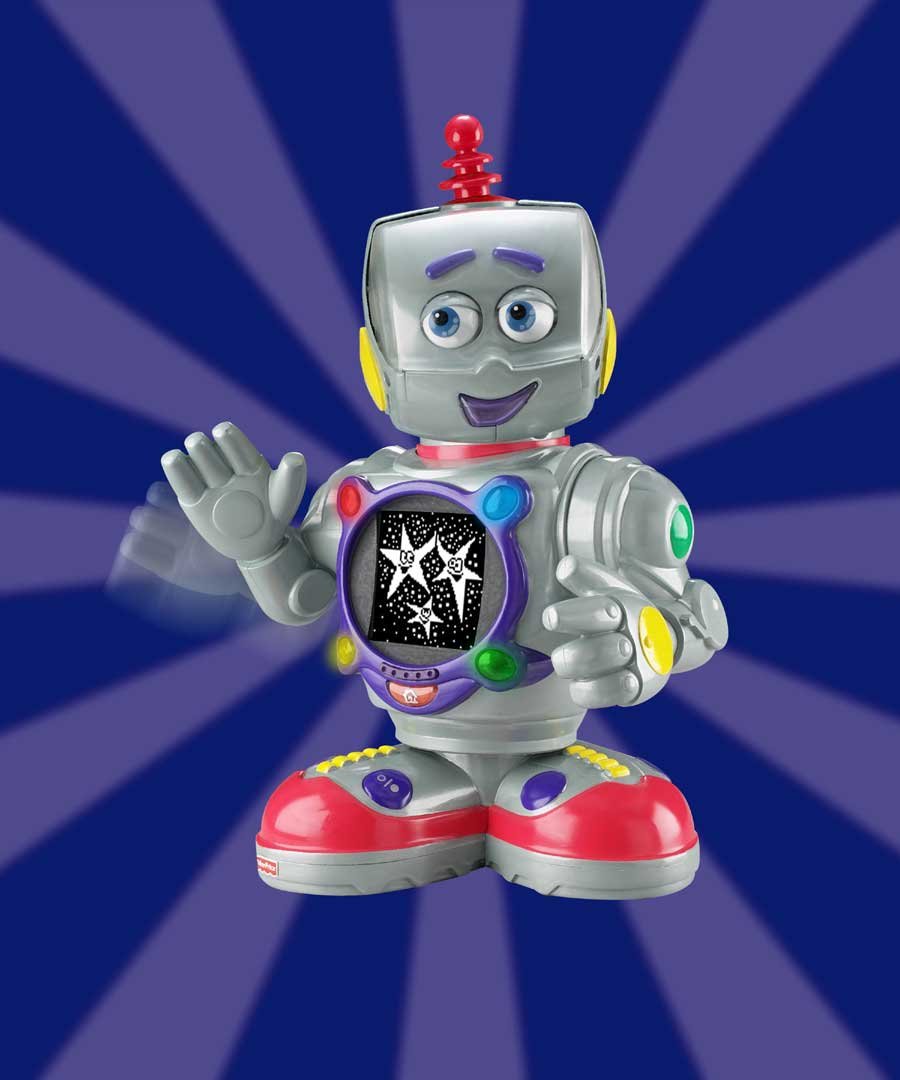
One thing you'll never forget about Lucasfilm Games and/or Humongous Entertainment. :-)
I know it sounds cliché, but I will never forget the people from both those companies. Heck, I see some of them all the time and keep in touch with many others! We went through a lot together. Stress was all around, emotions were on high. We learned to work together, to have each other's backs. For weeks or months, the only people we actually saw or ate with were our workmates. But we also had fun times, creative times. When we weren't in crunch mode, we watched TV shows, tried new restaurants, or went out dancing together. We bonded. These people became my friends. They became my family.
One thing you're particularly proud of in your videogame career.
It's so hard to pick just one! Please don't make me pick!
- I'm proud of breaking new ground with the products I designed. There were people who said Monkey 2 would never be as good as Monkey 1, or that children shouldn't use a computer, or that educational products would never hold kids' attention. But I helped prove how wrong they were.
- I'm proud of being one of the first technical women in games and one of the few female game designers, at the time, who made games that appealed to all genders. Though it could be difficult at times, I'm glad I spoke up when I thought something was sexist or offensive. And I'm happy to have helped build some strong, female characters.
- I'm also proud how many people were positively influenced or simply entertained by the characters and products I helped create. I love hearing stories about how a child hugged their computer because they fell in love with a character, or how a co-worker played Lucasfilm games all the way through college. All those crunch mode hours seem worth it when I see the smiles these games invoke.
I don't think you'll ever answer this question, but a LucasArts fan who didn't ask this to a Monkey 2 team member would be disbarred: do you know the secret of Monkey Island?
I do know the secret to Monkey Island, but if I told you, a wild troop of three-headed monkeys would chase me down and hang me by my littlest toenails over a totally indigestible vat of grog. Thankfully, players never die in Lucasfilm games. :)
Thanks very much for your time, Tami! The best quality of LucasArts adventure games was the connection we players felt with the designers, so we've always been communicating throughout all these years, in a sense. But sometimes interviews do the trick too! :-)
Thank you, Dom! I'm flattered so many people are still interested in our games, enjoyed the stories, and formed lasting connections to the characters and products. For me, that was always the goal.
